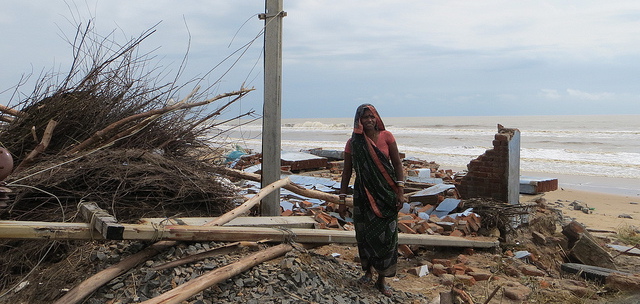Countries Prepare for Predicted El Niño Mid-Year

Forecasts indicate that an El Niño weather pattern is likely to develop in July or August this year potentially reducing monsoonal rainfall and agricultural production across India and Southeast Asia.
Background
The Australian Bureau of Meteorology has warned of a 70 per cent chance that an El Niño system will develop in the Southern Hemisphere this winter. The result of warming ocean temperatures, El Niño causes abnormal weather conditions around the world. In Australia, South-East Asia and India it has previously caused severe droughts. El Niño occurs every three to seven years and has critical consequences for food security. The last El Niño incidence in 2009 caused the worst drought in India in nearly four decades, reducing rice production by 10 million tonnes.
Comment
Australian experts have warned that El Niño could develop as early as July this year. Australia’s Bureau of Meteorology has indicated that the Central Pacific has warmed by 0.6 degrees Celsius since February. India’s Meteorological Department forecasts below average rainfall for this year with a 60 per cent probability of El Niño developing during the monsoon season.
Previous El Niño events have been linked to significant increases in world food prices and increased incidences of hunger and malnutrition. Food shortages and price rises linked to El Niño influenced changes in climate and were a contributing factor to the widespread food riots and social uprisings witnessed in 2008.
In India the monsoon contributes 70 per cent of annual rainfall irrigating over half of the countryʼs farmland. As a result severe drought caused by El Niño endangers Indiaʼs agricultural production and both local and international food supplies. Key producing countries in the Indo-Pacific are putting strategies in place to mitigate the expected impacts of El Niño in an attempt to reduce food insecurity and avoid further price increases.
In Indonesia the government has provided calendars to farmers setting out early planting dates. The agriculture ministry has also trained farming advisors to assist farmers with modern techniques with the aim of bringing forward the planting of some crops. The Philippine and Indian Governments have released drought tolerant varieties of rice. In Malaysia the government is encouraging increases in the capacity of water storage tanks.
Reassuringly food stockpiles are much higher than during previous El Niño occurrences. According to the US Department of Agriculture, since 2009 global rice stockpiles have risen by 15 million tonnes, to reach 109 million tonnes. The majority of this increase is in India, Thailand and China. Larger food stockpiles have the potential to reduce the strain on the task of meeting food demand should this year’s production fall short due to El Niño induced drought.
Uncertainties about the intensity and timing of El Niño weather patterns make it difficult to predict what will efficiently mitigate their impacts. Whether current food stockpiles combined with strategies implemented by the countries at risk will be sufficient to ensure food security remains to be seen. Given the correlation between food shortages, price rises and political instability in a number of countries however early-response action will be critical in avoiding a repeat of the social unrest witnessed in 2008.
Cécile Levacher is a research Assistant with the Global Food and Water Crises Research Programme.
This article was originally published by Future Directions International. It is republished with permission.


